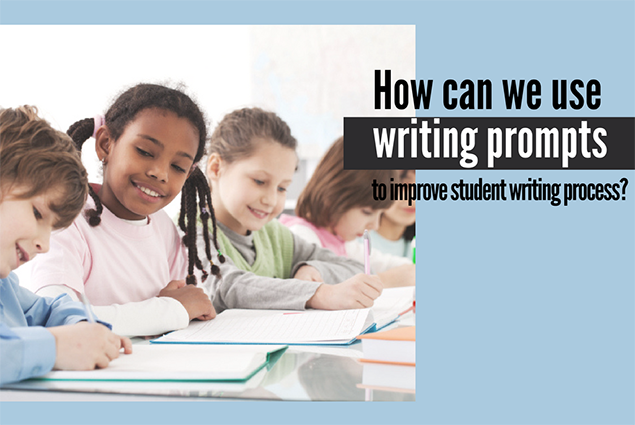Using Writing Prompts to Develop Student Writers
Posted by Network Support · Leave a Comment
Using Writing Prompts to Develop Student Writers
Writing is a complex task, and there may be students in the classroom who struggle with the process. For some students, conceiving and organizing ideas may be difficult, while for others, the challenge may be the writing process – converting their thoughts into words. Teachers can help students overcome these obstacles by encouraging students to write using writing prompts.
What are Writing Prompts?
Writing prompts are short texts, statements or images that help students kickstart their writing process and direct their writing in specific ways. Writing prompts are a useful strategy because they:
- Encourage student creativity and increase interest in writing.
- Offer students choices and opportunities to practice their writing skills.
- Enable students to draw on and write using their own experiences and ideas.
- Direct student writing (narrative, expository, or persuasive) and help students attain their writing goals.
- Help students identify genres and explore different styles of writing.
Writing Prompts in Practice
As with any strategy, teachers must first introduce and model the strategy to students using the following guidelines:
- Purpose of prompt: The first step is to help students understand the purpose of writing prompts in the classroom. Students must be taught to figure out the prompt and understand what is expected (in terms of writing) from them. Questions, such as, What type of writing does this prompt necessitate, or, what details should be included, or, who is the audience, can help students to understand the nature of the prompt and the writing style required.
- Model the strategy: After introducing the prompt and its purpose, model the strategy using an example. Display a writing prompt in front of the class. Teachers can brainstorm with students and generate ideas for writing with the prompt. Using the ideas generated, write a sample text with students. During the process, teachers must think aloud, as this can help students understand the teacher’s thinking process.
- Practice: After teaching the strategy, encourage students to practice and use the strategy in their writing activities. Some ways to use the strategy in the classroom include:
- Warm-up Writing: Use specific prompts and encourage students to write a few sentences as a warm-up activity. This helps students to get their creative ideas flowing, declutter their minds and focus on learning.
- Quick-Writes: These are typically conducted as entry or exit tasks. Prompts like “3 things that I learned today,” help students to quickly write text that is just a few sentences long. Students can also be given a time limit for writing quick-writes.
- Partner Writing: Student pairs are encouraged to brainstorm, generate ideas, plan and write together. The advantages with partner writing are that students can generate more ideas, and check and correct each other’s writing work.
- Homework and Independent Writing: Writing prompts can also be given for homework to encourage independent and free-style writing.
The main advantage of incorporating writing prompts in the classroom is that students gain confidence in their writing (freestyle or specific writing style), and in their writing skills.
Like this article for teachers?
Browse the Professional Learning Board COURSE CATALOG to find related online courses for teachers in your state. Professional Learning Board is a leading provider of online professional development classes that teachers use to renew a teaching license or renew a teaching certificate.





